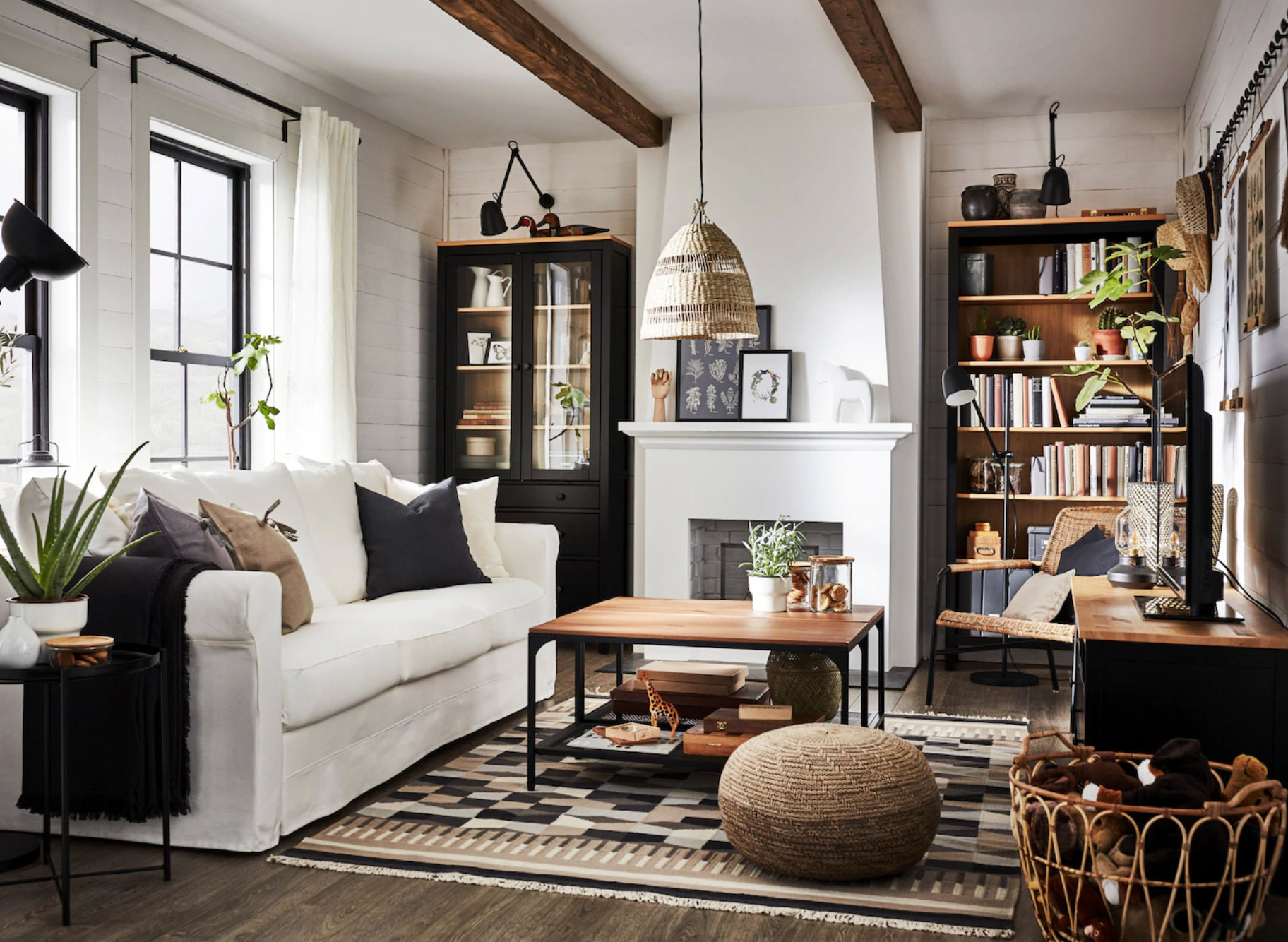
Two smaller tables placed in the center beautifully solve the purpose of one large coffee table without making the space look cramped. This Scandinavian style living room has a more compact arrangement ideal for smaller spaces. Ottomans and a coffee table create a small reading area to the side with a study corner positioned on the opposite end. This spacious living room has a primary seating area in the center, defined by a rug and an L-shaped sofa. Now here are a few living room layouts to inspire you and help get you started with designing your own: Place the furniture to allow movement so that people can walk freely around it and use the same space for numerous activities. For a cozy, intimate seating area in an otherwise open setting, a vignette can be created in between the seating with an area rug to tie all the furniture pieces together. Open plan living rooms aim at creating multipurpose spaces where a single area can be used for eating, entertaining and socializing. Float the furniture away from the wall to add a sense of warmth to the space.

You can add ottomans to balance out the arrangement. Chairs or single sofas can be placed on either side. The largest sofa should be ideally placed facing the focal point of the living room.

The distance between the sofa and television should ideally be three times the height of the screen.Ĭonsider the size and shape of the living room.For seating areas, place center tables at a distance of 18 inches or 1 foot away from your sofa.Maintain a 3 feet clear space for all movement pathways.Make sure that no two pieces of seating are separated by a distance of more than 10 feet.Measure everything accuratelyĪn efficient living room layout is the result of correct placements and right measurements. This will let you make use of natural as well as artificial lighting in the best way possible.
#Living room design layout for rectangular rooms windows#
While planning your layout, mark the positions of all the windows and lights inside the living room.

So place the furniture without obstructing walking paths. In an ideal living room, the movement paths are always around the seating area and never through it. The planning of seating area in a living room should always start with keeping the positions of doorways in mind. Here are few tips to help you with planning your living room: Consider positions of doorways beforehand Proper placement will make the best use of space available and also create an attractive, inviting setting for everyone. The living room is one of the most visible areas of the house, used by both visitors and family members. Once you buy your living room furniture, you’re faced with the task of planning an efficient layout.


 0 kommentar(er)
0 kommentar(er)
